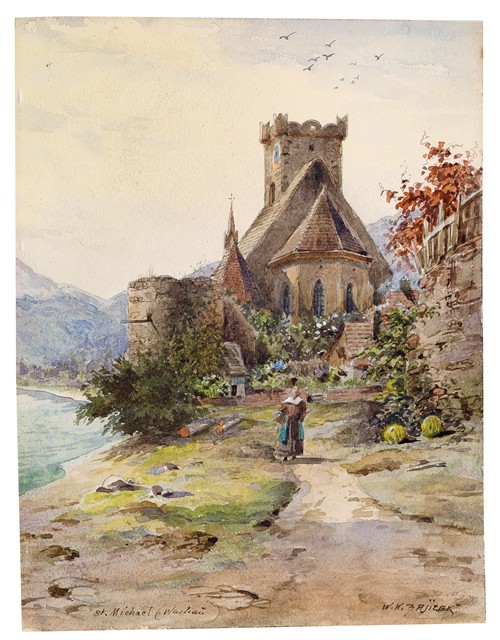
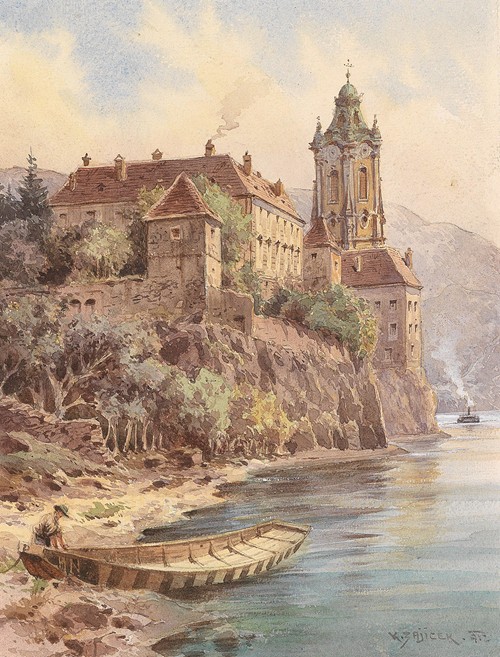
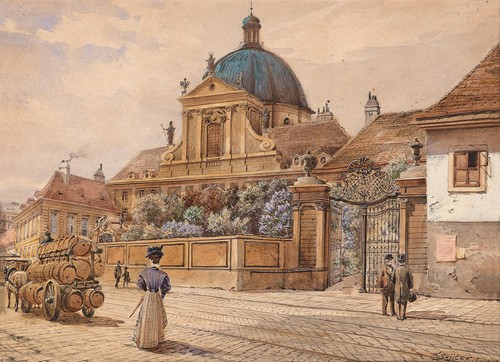
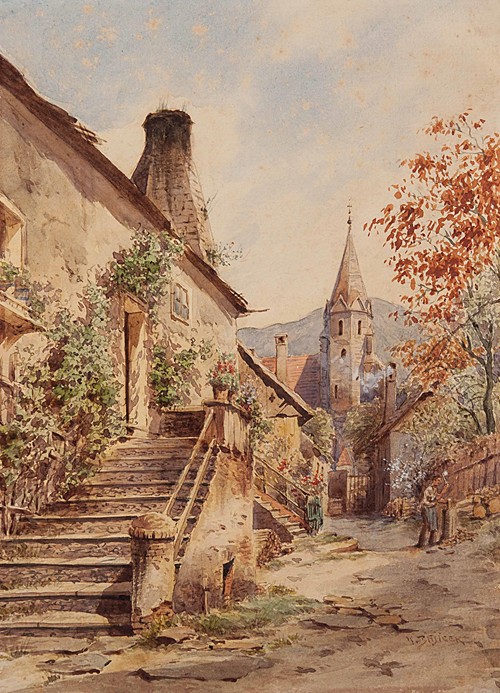
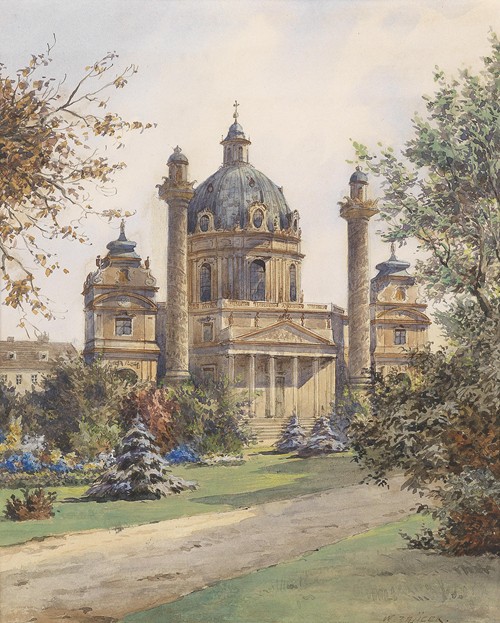
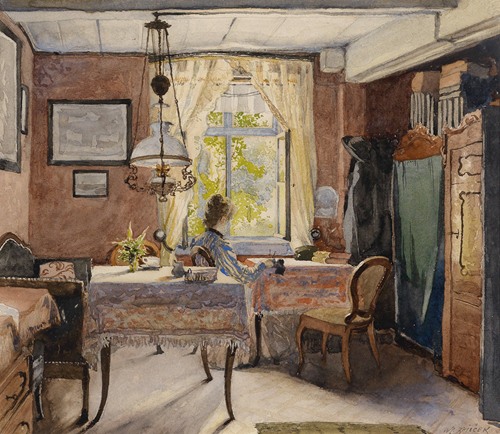
Carl Wenzel Zajicek was a Viennese painter.
He was born as one of 24 children of watchmaker Franz Zajicek. Educated in his father's craft, he worked as a watchmaker until 1900, but he practiced artistic painting as an amateur from a young age. Inspired by Emil Hütter, he specialized on Vedute of the city of Vienna, and he rose to notability in 1896 with a large panoramic painting.





